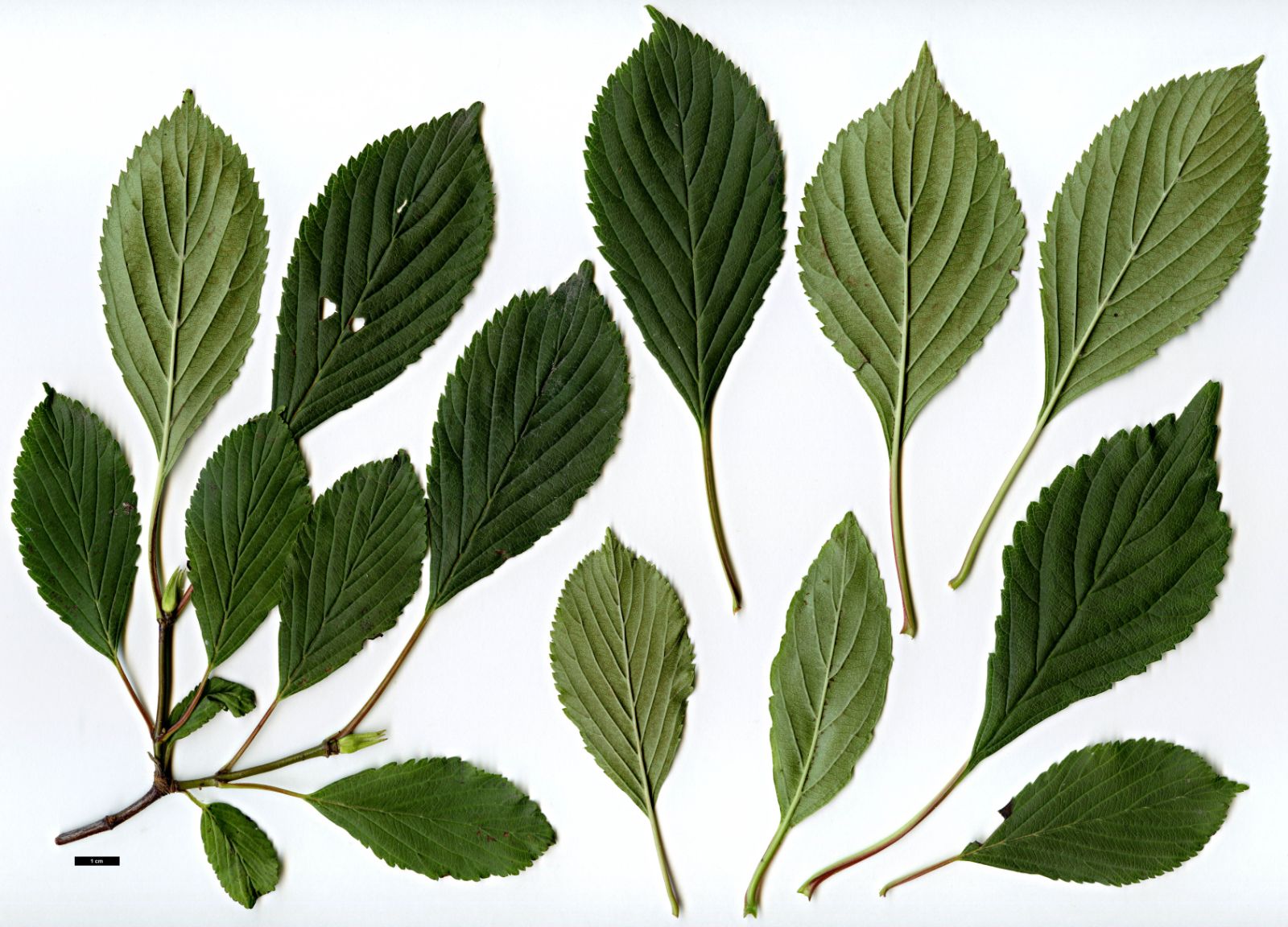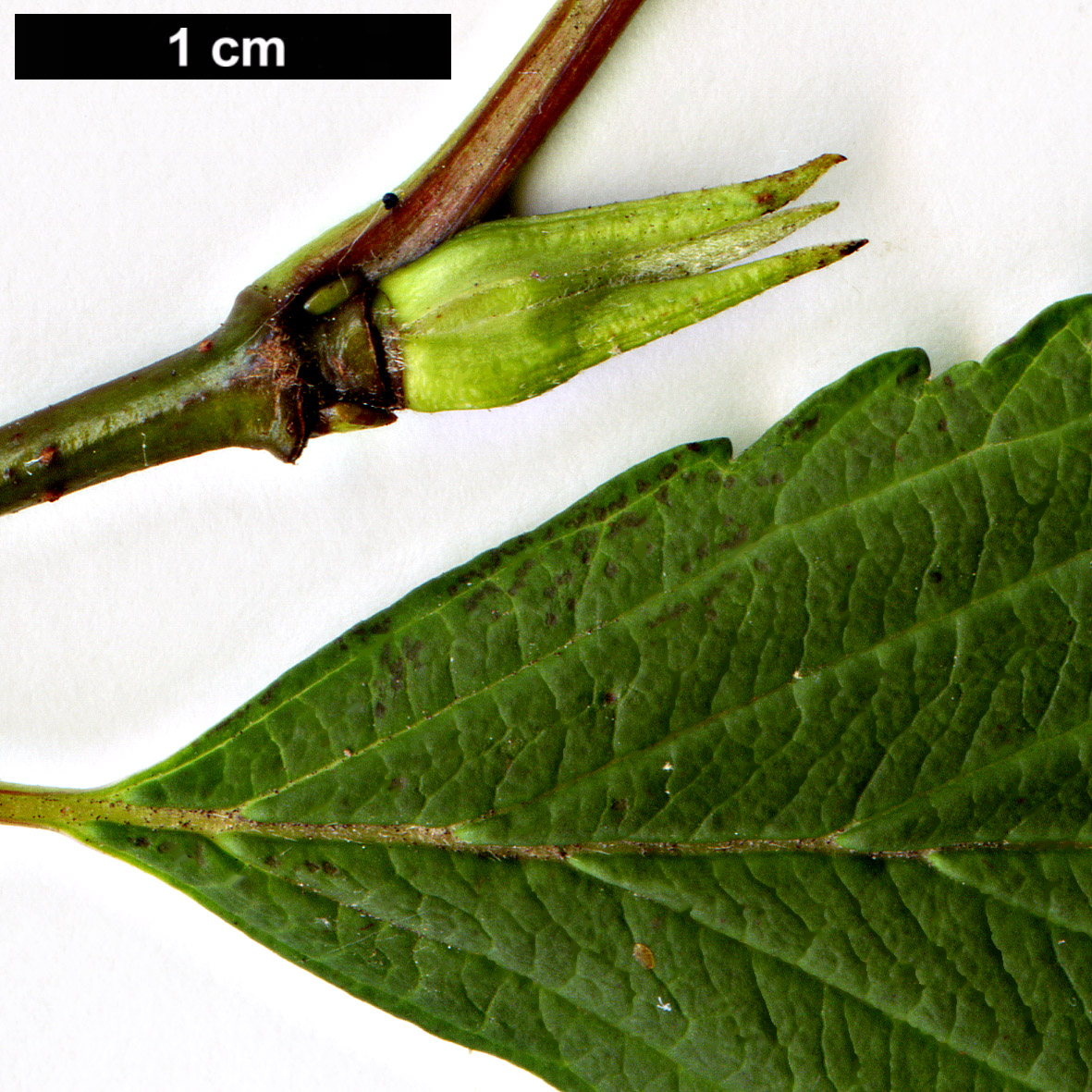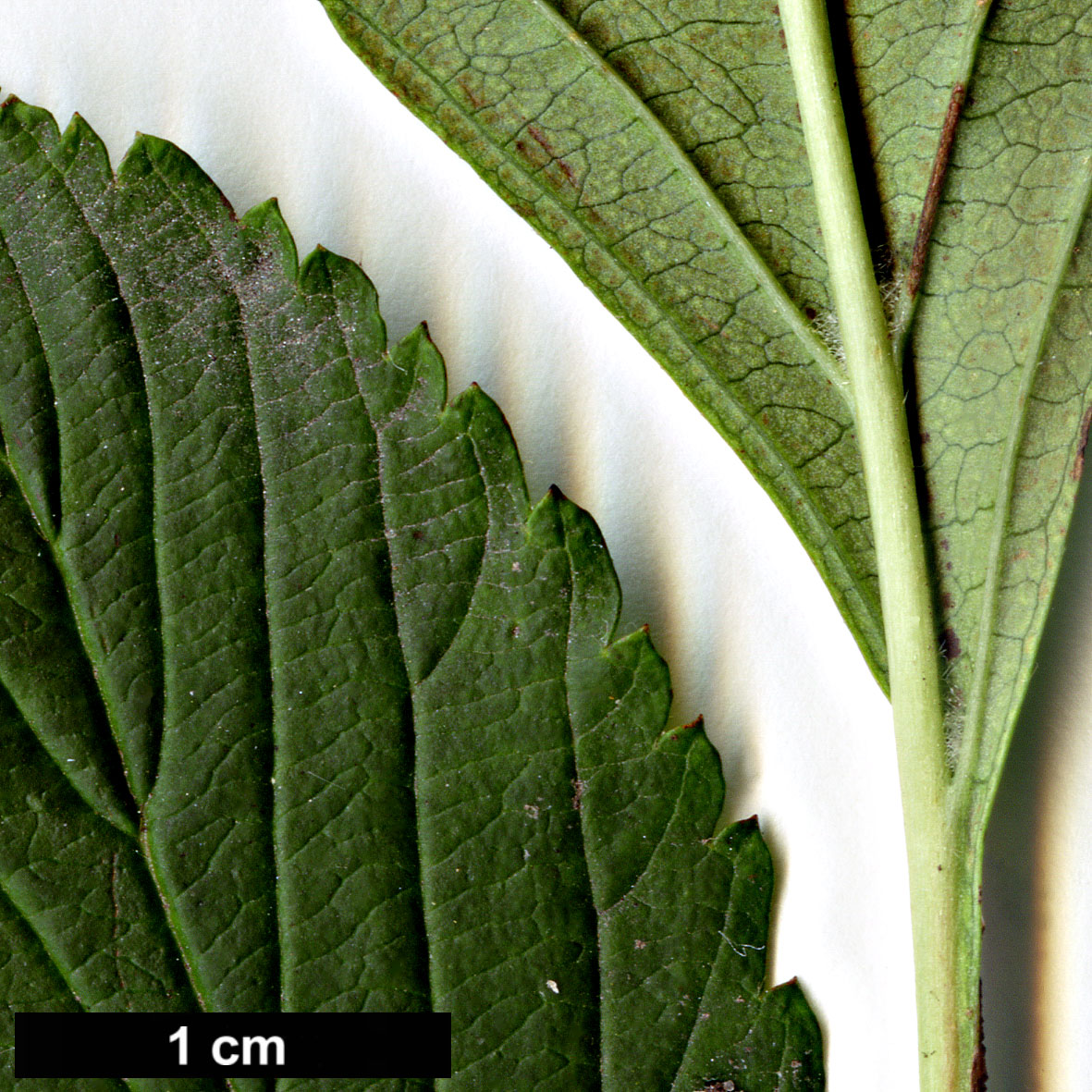Viburnum farreri
Credits
Article from Bean's Trees and Shrubs Hardy in the British Isles
Recommended citation
'Viburnum farreri' from the website Trees and Shrubs Online (treesandshrubsonline.
Genus
Synonyms
- V. fragrans Bge., not Loisel.
Other taxa in genus
- Viburnum acerifolium
- Viburnum betulifolium
- Viburnum × bodnantense
- Viburnum buddleifolium
- Viburnum burejaeticum
- Viburnum × burkwoodii
- Viburnum × carlcephalum
- Viburnum carlesii
- Viburnum cassinoides
- Viburnum cotinifolium
- Viburnum cylindricum
- Viburnum davidii
- Viburnum dentatum
- Viburnum dilatatum
- Viburnum erosum
- Viburnum foetidum
- Viburnum grandiflorum
- Viburnum harryanum
- Viburnum henryi
- Viburnum hupehense
- Viburnum japonicum
- Viburnum kansuense
- Viburnum lantana
- Viburnum lantanoides
- Viburnum lentago
- Viburnum macrocephalum
- Viburnum molle
- Viburnum nudum
- Viburnum odoratissimum
- Viburnum opulus
- Viburnum phlebotrichum
- Viburnum plicatum
- Viburnum propinquum
- Viburnum prunifolium
- Viburnum rhytidophyllum
- Viburnum rigidum
- Viburnum rufidulum
- Viburnum schensianum
- Viburnum setigerum
- Viburnum sieboldii
- Viburnum suspensum
- Viburnum tinus
- Viburnum utile
- Viburnum veitchii
- Viburnum wilsonii
- Viburnum wrightii
A deciduous shrub 10 ft or more high, and as much in diameter, with nearly glabrous young shoots. Leaves obovate or oval, pointed, much tapered towards the base, strongly toothed, with about six pairs of parallel veins, 11⁄2 to 4 in. long, 1 to 23⁄4 in. wide, glabrous except for tufts of down in the vein-axils beneath, stalk 1⁄3 to 3⁄4 in. long. Flower-clusters terminal and lateral, 11⁄2 to 2 in. wide; flower-stalks slightly hairy or glabrous. Each flower is 1⁄3 to 5⁄8 in. wide, white, or tinged with pink on opening, the corolla-lobes rounded and spreading, the tube slender and 3⁄8 in. long. Calyx 1⁄8 in. long, with five small, rounded, membranous lobes. Stamens short and inserted about midway on the tube. Fruits said to be brilliant red and edible. Bot. Mag., t. 8887.
Native of Kansu, China; first introduced by W. Purdom for Messrs Veitch under his numbers 689 (‘white flowers’) and 690 (‘pink’). The first flowers I saw were sent to me from Wakehurst, Sussex, in March 1920, which had been gathered from one of Purdom’s plants obtained from the Coombe Wood Nursery some years previously. As a rule it starts flowering in November and continues through the winter, the flowers being able to bear ten or twelve degrees of frost without injury. They have a very charming heliotrope-like fragrance. According to Farrer, this is the best beloved and most universal of garden plants all over N. China, and it is curious that so popular a shrub should have been so long in reaching this country. A dried specimen at Kew is dated from St Petersburg as long ago as 1835; and the Russian traveller, Potanin, found it wild and cultivated in Kansu in 1885. But nothing was heard of it until Farrer found it, wrote about it, and sent home seeds. In his On the Eaves of the World, Vol. I, pp. 96, 97, he alludes to it as ‘this most glorious of shrubs’. This is a courageous statement to make, but, seen at its best on a winter’s day well in bloom and filling the air with its fragrance, it is a singularly delightful shrub. Farrer found it 10 ft high and more in diameter, growing wild in cold bleak regions, so it is absolutely hardy. He describes the fruit as well-flavoured and of a ‘glossy scarlet.’ There are two forms in cultivation, one with bronzy young leaves and shoots and flowers that are pink in bud; and another with green shoots and foliage and pure white flowers. They vary also in mode of growth. Some are stiffly erect whilst others are more sprawling, their lower branches layering themselves freely. This is certainly the best midwinter blossoming shrub introduced since the advent of Hamamelis mollis.
To the above account, taken almost unchanged from previous editions, there is little to add, except to stress the variability of this species in its garden value. The Purdom introduction first reached gardens through the winding-up sale of the Coombe Wood Nursery in 1913–4. The seeds gathered by Farrer were distributed by the Royal Horticultural Society, excepted for those kept by Farrer himself for the nursery he had founded. It has been said that the Purdom introduction was the finer of the two, but in fact the plants from the seeds collected on Farrer’s expedition (in which, be it said, Purdom too took part) proved to be very variable and it is doubtful whether the best of these were inferior to those raised from the Purdom introduction. The form with pure white flowers and light green leaves mentioned above has been named ‘Candidissimum’.
The name V. fragrans, long used for this plant, is invalid, having been used earlier for another species.
From the Supplement (Vol. V)
A clone descended from one of the Farrer seedlings has been named ‘Farrer’s Pink’, and is available in commerce.



